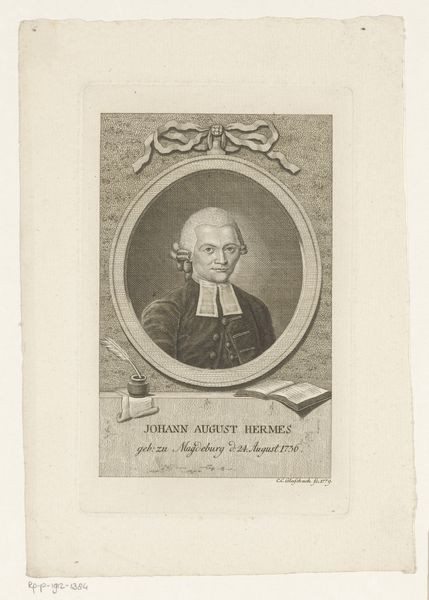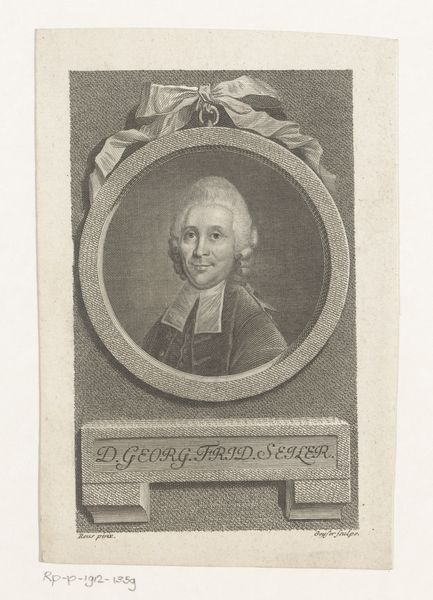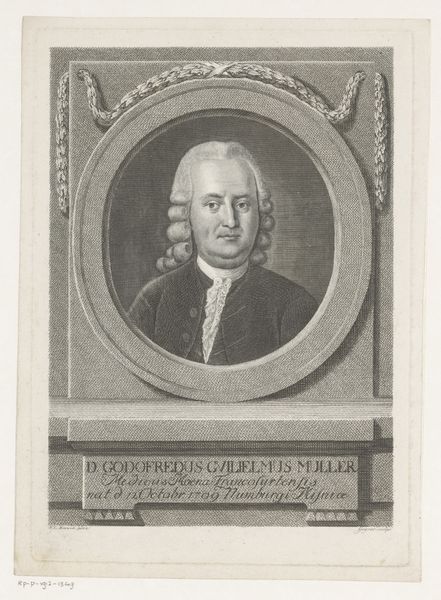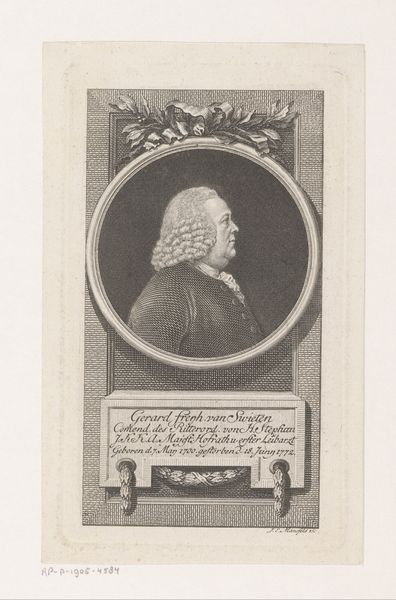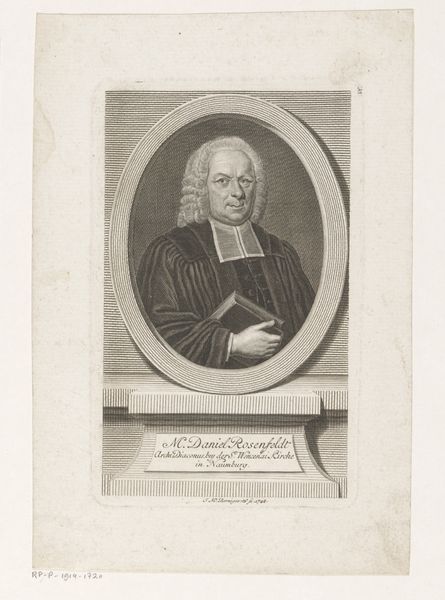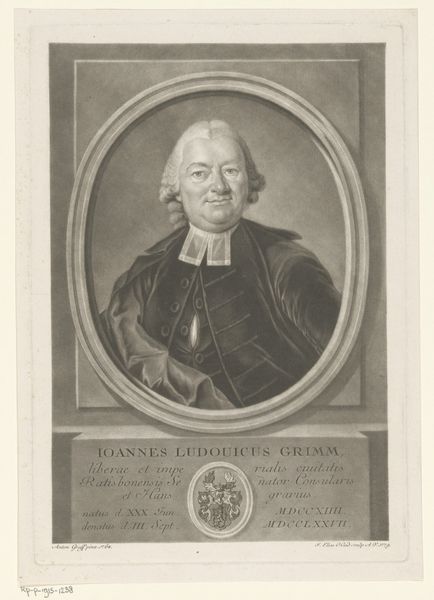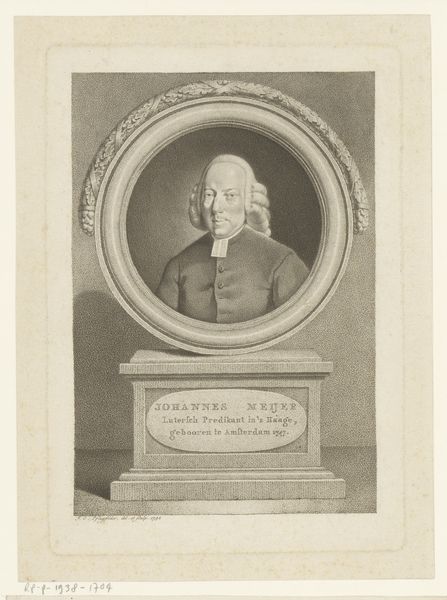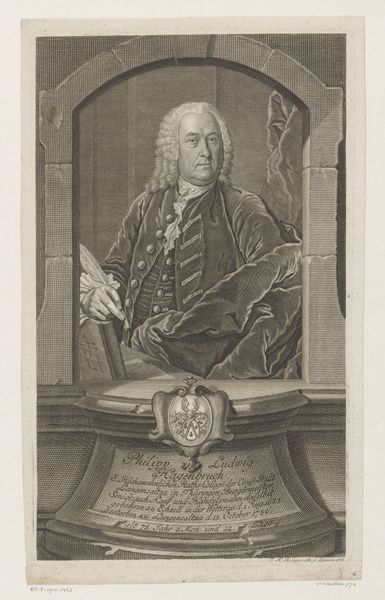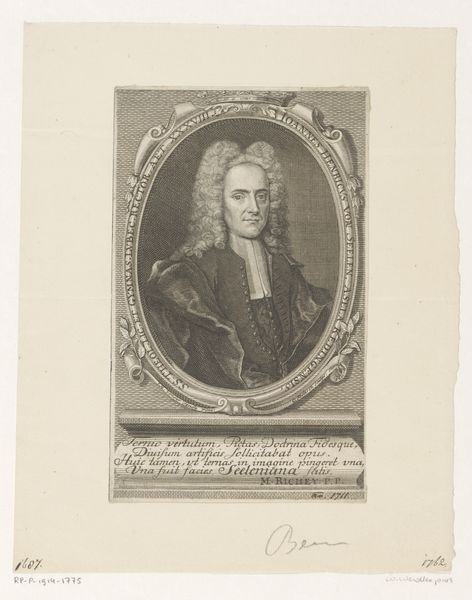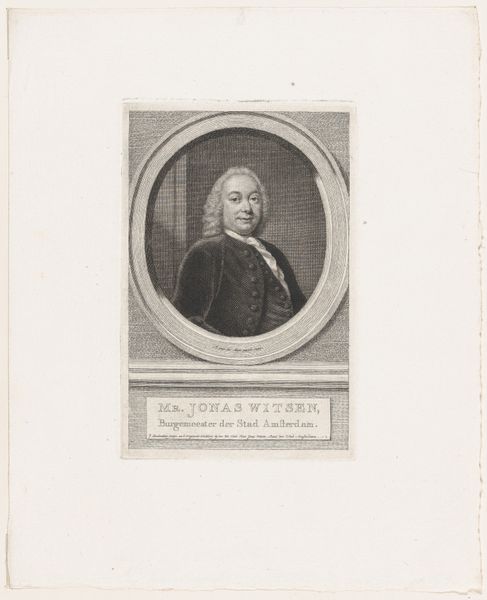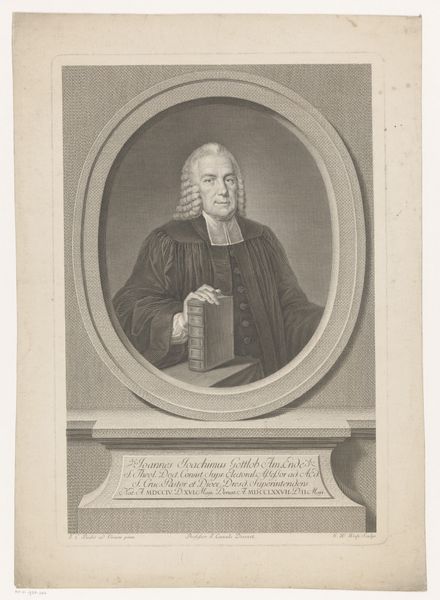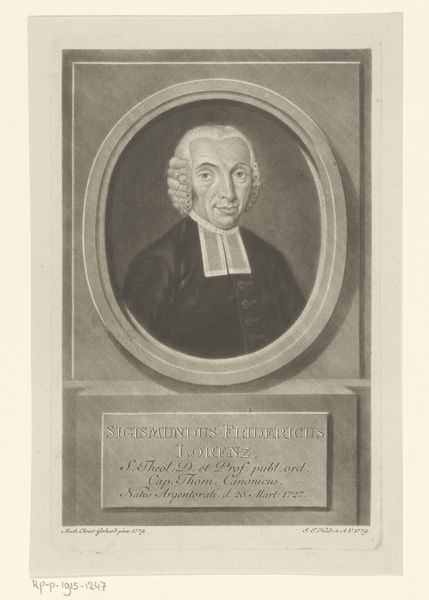
Dimensions: height 172 mm, width 106 mm
Copyright: Rijks Museum: Open Domain
Editor: We're looking at an engraving titled "Portret van Johann Samuel Patzke" made in 1788 by Johann Christian Gottfried Fritzsch. The printmaking technique is quite interesting, and I'm struck by the formal arrangement of the portrait within this architectural, almost memorial, structure. What do you see in this piece from a formalist perspective? Curator: Well, first and foremost, I am drawn to the interplay of lines and shapes. Notice the crisp delineation of the figure set against the softer, almost romantic backdrop of trees. It generates a palpable tension, doesn't it? Observe also the balanced composition; the portrait acts as a focal point, firmly grounded within a visually stable framework. How do you interpret the contrast between the smooth, oval portrait frame and the more elaborate, Baroque-esque ornamentation surrounding it? Editor: I suppose it highlights the subject’s status while referencing established artistic conventions. But does the engraving medium, with its limitations in tonal range, perhaps flatten the visual impact, restricting a deeper engagement with depth and volume? Curator: An interesting point. However, I’d argue that the controlled use of hatching and cross-hatching in creating tonal variation demonstrates Fritzsch's mastery within the inherent constraints of the medium. The lack of vibrant colors, in my view, focuses the eye more intensely on the structural relationships within the work, heightening our awareness of its formal components. Note how even the remaining negative space shapes our interpretation. What effect does that have for you? Editor: I see it creates a sense of the eternal, elevating the individual to the realm of historical memory. This formalist approach offers an invaluable method to unpack the piece without being tied to narratives. Thank you! Curator: Indeed. It demonstrates that careful analysis of form can be just as revealing, if not more so, than an exclusive focus on content or context.
Comments
No comments
Be the first to comment and join the conversation on the ultimate creative platform.


